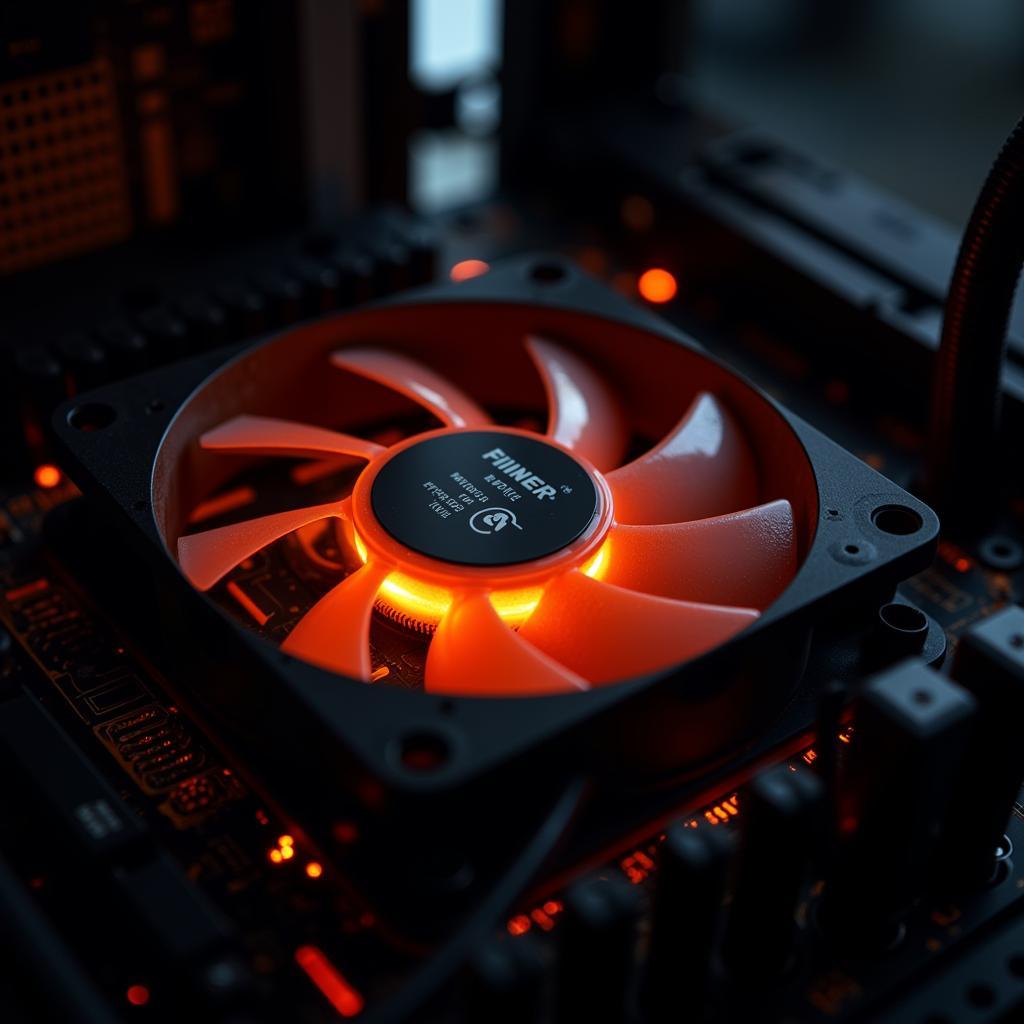Knowing How To Test Cpu Fan Speed is crucial for maintaining your computer’s performance and longevity. A malfunctioning CPU fan can lead to overheating, system instability, and even permanent damage to your components. This comprehensive guide will walk you through various methods to effectively test your CPU fan speed and ensure your system stays cool under pressure.
Why CPU Fan Speed Matters
Before we dive into the “how”, it’s important to understand the “why”. Your CPU, the brain of your computer, generates heat when processing information. The CPU fan plays a critical role in dissipating this heat, preventing overheating that can lead to performance throttling, system crashes, and even component failure.
 CPU Fan Dissipating Heat
CPU Fan Dissipating Heat
Testing your CPU fan speed allows you to:
- Identify potential fan failures: A fan that’s running too slow or not at all is a major red flag.
- Diagnose overheating issues: If your computer is frequently overheating, a faulty fan might be the culprit.
- Ensure optimal cooling performance: Knowing your fan speed allows you to adjust fan curves for optimal cooling and noise levels.
Methods to Test CPU Fan Speed
There are several reliable ways to test your CPU fan speed, each offering its own set of advantages. Let’s explore some of the most effective methods:
1. Using BIOS/UEFI
Your computer’s BIOS or UEFI (its pre-boot environment) often provides the most direct way to monitor hardware, including your CPU fan speed.
- Access BIOS/UEFI: As your computer boots, press the designated key (usually Del, F2, F10, or Esc) to enter BIOS/UEFI.
- Navigate to Hardware Monitor: Look for sections labeled “Hardware Monitor,” “PC Health Status,” or similar.
- Locate CPU Fan Speed: Find the entry for your CPU fan. The speed is typically displayed in revolutions per minute (RPM).
Note: Not all BIOS/UEFI versions display fan speeds. If you can’t find the information, move on to the next method.
2. Employing Monitoring Software
Numerous third-party applications provide detailed hardware monitoring, including real-time CPU fan speed readings. Some popular options include:
- HWMonitor: A free and lightweight tool that displays a wealth of sensor data.
- SpeedFan: A comprehensive monitoring and fan control application.
- AIDA64 Extreme: A powerful diagnostic and benchmarking tool with extensive hardware monitoring capabilities.
These applications provide user-friendly interfaces to track CPU fan speed, temperature, and other vital system parameters.
3. Physical Inspection
While not a precise measurement method, visually inspecting your CPU fan can provide valuable insights:
- Observe Fan Rotation: Ensure the fan is spinning freely and isn’t obstructed by cables or other components.
- Listen for Noise: Unusual noises like grinding, clicking, or rattling can indicate a failing fan.
If you suspect a physical issue, consider cleaning the fan and heatsink or seeking professional assistance.
Troubleshooting Common CPU Fan Issues
- Fan Not Spinning: Check for loose connections or obstructions. You might need to replace the fan if it’s faulty.
- Slow Fan Speed: Ensure the fan header on your motherboard is set to “PWM” mode for automatic speed control.
- Loud Fan Noise: Clean the fan and heatsink to remove dust buildup. Consider applying thermal paste to improve heat transfer.
Conclusion
Regularly testing your CPU fan speed is essential for maintaining a healthy and stable computer system. By following the methods outlined in this guide, you can ensure your CPU stays cool and performs at its best. Remember, a little maintenance goes a long way in extending the life of your valuable components.
FAQs
Q1: What is a normal CPU fan speed?
A: Normal CPU fan speeds vary depending on the fan model, CPU temperature, and workload. However, a typical range is between 800 to 1800 RPM.
Q2: Can I adjust my CPU fan speed?
A: Yes, you can often adjust CPU fan speed through BIOS/UEFI settings or using third-party monitoring software like SpeedFan.
Q3: My CPU fan is making a rattling noise. What should I do?
A: A rattling noise could indicate a failing fan bearing. Consider cleaning the fan and if the noise persists, replacing the fan is recommended.
For any assistance or inquiries, feel free to reach out to our dedicated support team at Phone Number: 0903426737, Email: fansbongda@gmail.com Or visit our address: Group 9, Area 6, Gieng Day Ward, Ha Long City, Gieng Day, Ha Long, Quang Ninh, Vietnam. We have a 24/7 customer support team.


